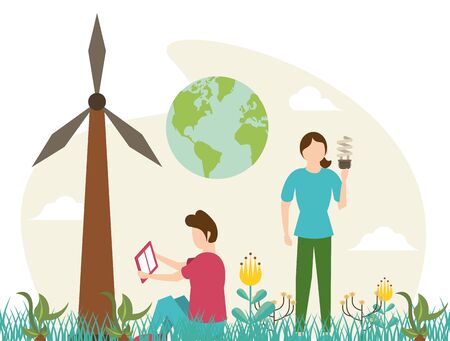1. Understanding Fair Trade Coffee
Fair Trade coffee is more than just a label—its a global movement that focuses on creating better trading conditions for coffee farmers while promoting environmental sustainability. As climate change continues to affect coffee-growing regions, understanding how Fair Trade works can help us see its role in building more resilient farms and communities.
What Is Fair Trade Coffee?
Fair Trade coffee refers to beans that are certified to have been produced under specific ethical standards. These standards ensure that farmers receive fair prices for their crops, work in safe conditions, and use environmentally responsible farming practices. The goal is to create a more equitable system that benefits both people and the planet.
Key Principles of Fair Trade
| Principle | Description |
|---|---|
| Fair Pricing | Farmers receive a minimum price to protect them from market fluctuations. |
| Direct Trade | Minimizing middlemen ensures more profits go directly to producers. |
| Community Development | Part of the premium supports local projects like schools and healthcare. |
| Environmental Sustainability | Farming methods focus on reducing harm to the environment and adapting to climate change. |
| Labor Rights | No child labor or forced labor; workers have safe conditions and fair wages. |
The Impact on Coffee Farmers
For many small-scale farmers, joining a Fair Trade cooperative can be life-changing. It not only guarantees them a stable income but also gives them access to resources and training that help improve their crops and adapt to climate challenges. This includes education on sustainable farming techniques, soil management, and water conservation—all crucial as weather patterns become more unpredictable.
Real-World Benefits
Communities involved in Fair Trade often report improved living conditions. The additional income from fair pricing helps families invest in housing, education, and health. Plus, with community development funds, entire villages can build clean water systems or solar power stations that support long-term resilience.
Ethical Sourcing & Climate Resilience
Sourcing coffee ethically means choosing beans that come from farms committed to sustainability. When companies buy Fair Trade coffee, theyre supporting systems that reduce deforestation, promote biodiversity, and encourage carbon-conscious farming practices. All these actions contribute to climate resilience—not just for the farms themselves but for the global environment as well.
Why It Matters More Than Ever
As rising temperatures threaten traditional coffee-growing regions, supporting Fair Trade becomes a way for consumers to take part in climate action. By buying responsibly sourced coffee, we help create demand for sustainable practices that protect the future of our morning brew—and the people who grow it.
2. Climate Change and Its Impact on Coffee Farming
Climate change is hitting coffee farmers hard, especially those in regions that have long depended on stable weather patterns to grow high-quality beans. Rising temperatures, unpredictable rainfall, and shifting growing zones are all making it more difficult to produce coffee consistently. These changes don’t just affect how much coffee is grown—they also impact the flavor of the beans and the ability of farmers to make a living.
How Temperature Affects Coffee Plants
Coffee plants are sensitive to temperature changes. Arabica coffee, which makes up most of the world’s specialty coffee, grows best between 60°F and 70°F. When temperatures rise above this range, it can cause stress to the plants, leading to lower yields and poor bean development. Warmer conditions can also encourage pests like the coffee berry borer and diseases such as leaf rust, which thrive in hotter, more humid environments.
Ideal vs. Actual Conditions for Arabica Coffee
| Condition | Ideal Range | Impact of Climate Change |
|---|---|---|
| Temperature | 60°F – 70°F (15°C – 21°C) | Increasing average temps reduce yield & quality |
| Rainfall | 40 – 100 inches/year (1000 – 2500 mm) | Unpredictable rain affects flowering & harvest timing |
| Altitude | 3,000 – 6,000 feet (900 – 1800 m) | Growing zones shift higher; limited suitable land |
Changing Weather Patterns Disrupt Harvests
Coffee farming depends on a predictable cycle of wet and dry seasons. The rainy season typically triggers flowering, while the dry season allows cherries to ripen for harvest. But with climate change, these patterns have become less reliable. Some farmers report early or late rains that confuse the plants, resulting in uneven flowering and inconsistent cherry development.
The Shift in Coffee-Growing Regions
As lowland areas become too hot or dry to support traditional coffee varieties, farmers are moving uphill to find cooler climates. However, not all regions have higher elevations available, and relocating isn’t always feasible due to land rights or cost. In countries like Colombia or Ethiopia, farmers may be able to move up the mountain—but in flatter regions like parts of Brazil or Vietnam, options are limited.
Examples of Regional Shifts:
- Colombia: Farmers moving from 1,200m to above 1,500m elevation.
- Ethiopia: Traditional coffee zones are expanding into previously unsuitable highlands.
- Brazil: Experiencing increased droughts in major growing areas like Minas Gerais.
The Human Side: Farmer Livelihoods at Risk
The economic impact on farmers is significant. Lower yields mean less income, while increased costs for pest control or irrigation strain already tight budgets. Many smallholder farmers rely entirely on coffee sales for their livelihood—so when production drops or quality falls below export standards, their families suffer directly.
This is where Fair Trade plays a critical role by providing minimum price guarantees and additional premiums that help farmers invest in climate adaptation strategies such as planting shade trees, improving soil health, and experimenting with more resilient coffee varieties.
Climate change is reshaping the future of coffee farming—and unless farmers get the tools they need to adapt now, we risk losing not only our morning brew but also the communities who grow it.

3. Building Climate-Resilient Coffee Farms
Fair Trade coffee farmers are on the front lines of climate change. Rising temperatures, unpredictable rainfall, and increased pests threaten their crops and livelihoods. To protect their farms and ensure long-term sustainability, many Fair Trade farmers are adopting adaptive farming practices that help build resilience against these challenges.
Agroforestry: Growing Coffee Under Shade
Agroforestry is a method where coffee is grown under a canopy of trees. This approach mimics the natural environment and helps regulate temperature, improve water retention, and support local wildlife. Shade trees also provide additional income sources like fruit or timber.
Benefits of Agroforestry
| Benefit | Description |
|---|---|
| Temperature Control | Trees offer shade that cools the air and soil, protecting coffee plants from heat stress. |
| Soil Health | Falling leaves decompose and enrich the soil with organic matter. |
| Biodiversity | Provides habitat for birds and insects that naturally control pests. |
Biodiversity Integration: Nature as an Ally
Diverse ecosystems are more stable and better able to adapt to changes. Fair Trade farmers often plant a mix of native plants, maintain hedgerows, and preserve nearby forests. These efforts attract beneficial insects, pollinators, and birds that help manage pests without chemicals.
Examples of Biodiversity Practices
- Planting flowers between rows to attract pollinators
- Using native shrubs to create natural barriers against erosion
- Encouraging bird habitats to reduce insect damage
Soil Regeneration: Feeding the Earth That Feeds Us
Healthy soil is key to growing strong coffee plants. Fair Trade farmers use techniques like composting, cover cropping, and reduced tillage to improve soil fertility and structure. These methods help retain moisture, reduce erosion, and increase resistance to droughts and heavy rains.
Soil Regeneration Techniques Used by Farmers
| Technique | How It Helps |
|---|---|
| Composting | Adds nutrients back into the soil using organic waste like coffee pulp and leaves. |
| Cover Crops | Planted between harvests to prevent erosion and fix nitrogen in the soil. |
| Minimal Tillage | Keeps soil structure intact, reducing carbon loss and promoting microbial life. |
By combining traditional knowledge with modern sustainable practices, Fair Trade coffee farmers are not just surviving climate change—theyre adapting in smart ways that protect their communities and our planet’s future cup of coffee.
4. The Role of Fair Trade Certification in Sustainability
Fair Trade certification plays a crucial role in helping coffee farms become more sustainable, especially as they face the growing challenges of climate change. By setting clear standards that focus on environmental care and social equity, Fair Trade helps create a stronger foundation for farming communities.
Environmental Stewardship Through Fair Trade Standards
One of the core goals of Fair Trade is to protect the environment. Certified coffee farms must follow eco-friendly practices that help preserve natural resources and reduce harm to the planet. These include:
- Using fewer harmful chemicals and pesticides
- Encouraging organic farming methods
- Promoting shade-grown coffee to protect biodiversity
- Managing water use responsibly
Empowering Farmers with Equitable Pricing
Fair Trade ensures that farmers receive a minimum price for their coffee, no matter what happens in the global market. This stable income helps them invest in long-term solutions, like soil improvement, irrigation systems, or planting climate-resilient crops.
Fair Trade Pricing Benefits
| Benefit | Description |
|---|---|
| Minimum Price Guarantee | Protects farmers from market crashes and ensures steady income. |
| Fair Trade Premium | Extra funds invested back into community projects like schools, healthcare, or farm improvements. |
| Long-Term Contracts | Helps farmers plan ahead and make better decisions for their land and families. |
Education and Training for Resilience
Fair Trade programs often include education and technical training that help farmers adapt to changing weather patterns and improve their farming methods. This includes:
- Sustainable land management techniques
- Pest control without harmful chemicals
- Crop diversification strategies to reduce risk
Community Support Builds Stronger Farms
A big part of the Fair Trade model is about investing in people. When farmers are supported through fair wages and community development projects, they are more resilient against the effects of climate change. These projects may include:
- Building better infrastructure like roads or storage facilities
- Improving access to clean water and healthcare
- Supporting womens leadership in farming cooperatives
The Bottom Line: Fair Trade as a Tool for Climate Resilience
By promoting environmental responsibility, fair pricing, education, and strong community ties, Fair Trade certification gives coffee farmers the tools they need to build farms that can withstand the pressures of climate change—today and into the future.
5. How American Consumers Can Make a Difference
Climate change is affecting coffee farmers around the world, especially those in vulnerable regions. But as a U.S. consumer, you have the power to support solutions by making thoughtful choices. Buying Fair Trade certified coffee and supporting sustainable sourcing practices can help build climate-resilient coffee farms.
Why Fair Trade Matters
Fair Trade certification means farmers get fair prices, better working conditions, and more funds for community development. It also encourages environmentally friendly farming methods that help protect ecosystems and reduce carbon emissions.
What You Support When You Buy Fair Trade Coffee
| Benefit | Impact on Farmers & Climate |
|---|---|
| Fair Prices | Helps farmers invest in long-term sustainability instead of short-term survival |
| Community Funds | Supports education, clean water, and climate adaptation projects |
| Sustainable Farming Practices | Reduces soil erosion, conserves water, and protects biodiversity |
Everyday Actions That Make an Impact
You don’t need to be an expert to make a difference. Here are simple steps you can take:
1. Look for the Fair Trade Certified Label
When shopping for coffee at your local grocery store or online, check the packaging for the Fair Trade Certified seal. This ensures your purchase supports ethical and sustainable farming.
2. Ask Questions at Cafés
If you’re grabbing a cup of coffee from your favorite café, ask if they serve Fair Trade or sustainably sourced coffee. The more people ask, the more businesses will listen.
3. Support Brands That Prioritize Sustainability
Some U.S. coffee brands are committed to working with smallholder farmers and using eco-friendly methods. Choose companies that are transparent about their supply chains and environmental impact.
4. Spread the Word
Tell your friends, family, and coworkers why you choose Fair Trade coffee. Sharing knowledge helps create a ripple effect of conscious consumption.
Your Role in Building Resilient Farms
The journey of your morning cup of coffee starts thousands of miles away on a farm impacted by climate change. By choosing Fair Trade and advocating for sustainable practices, youre not just buying better coffee—youre helping build stronger communities and a healthier planet.

